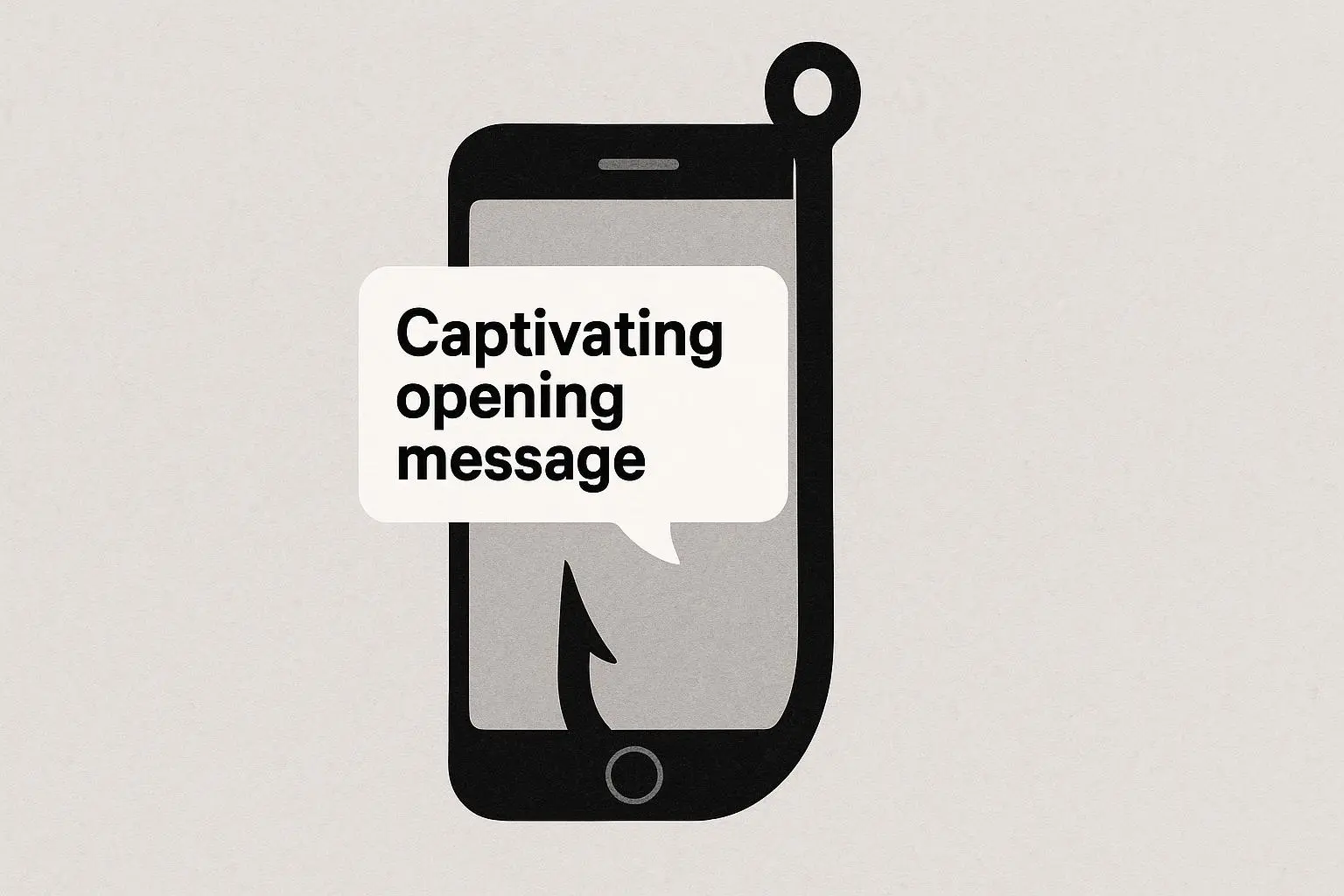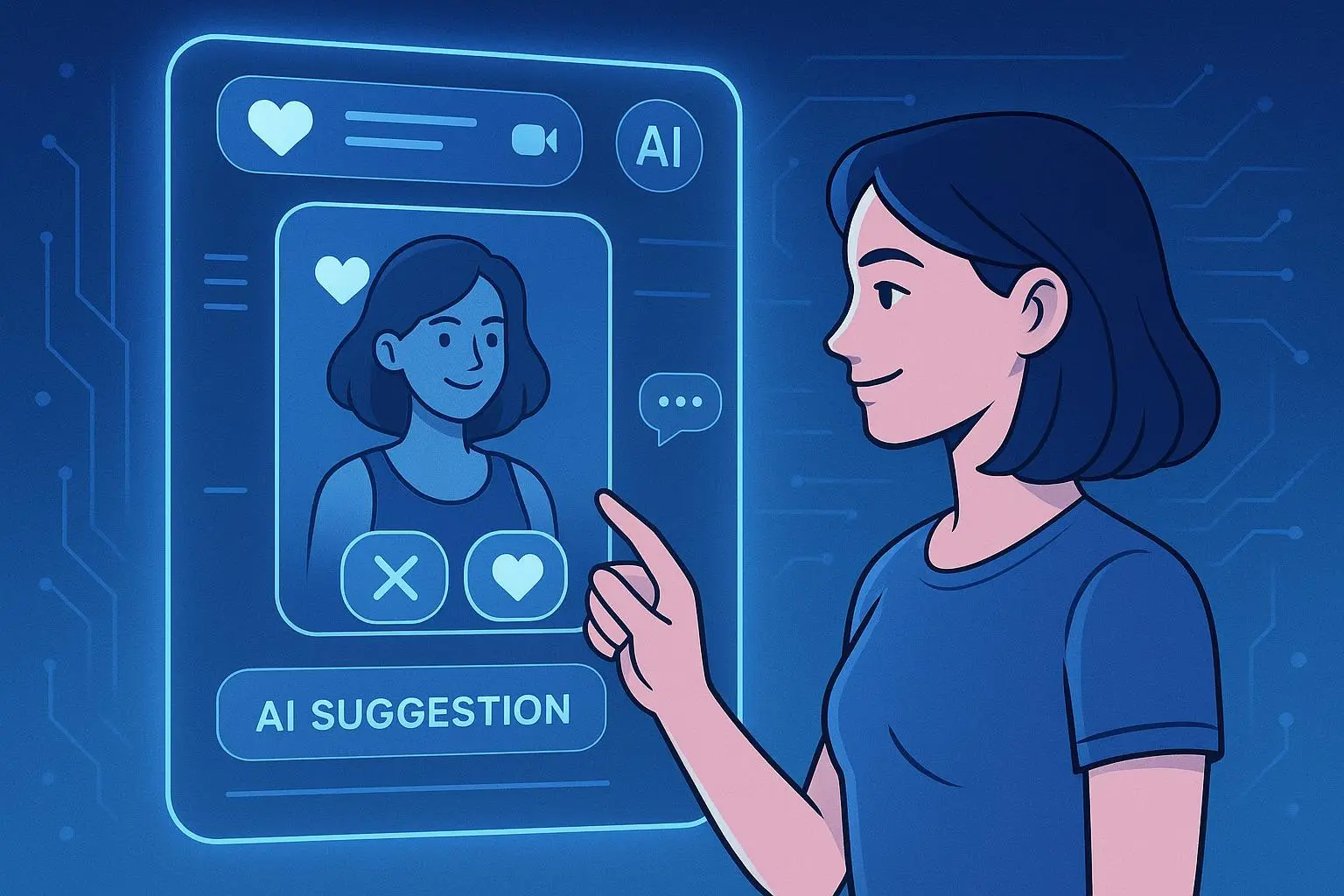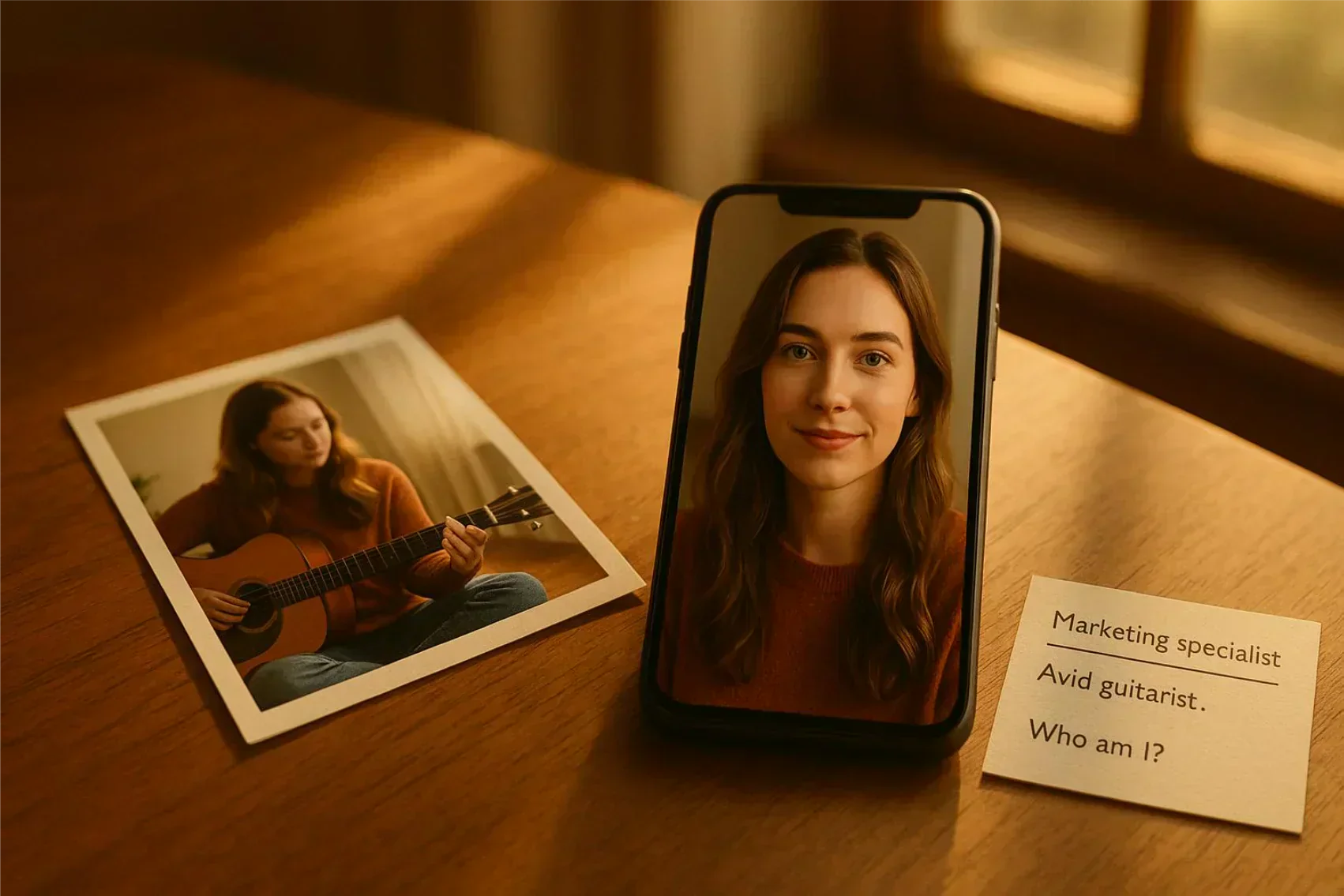
How to Craft Opening Lines That Actually Get Replies
Published on 7/25/2025 • 6 min read
I used to dread opening my dating apps. The first message felt like stepping into a dark room—unclear, awkward, and often ignored. Over time I treated those lines like tiny auditions: show curiosity, personality, and that I’d actually read the profile. The difference between a message that gets a reply and one that goes nowhere usually comes down to three things: curiosity, clarity, and a little creativity.
Why the first message matters more than you think
The first message is a social contract in miniature. It signals who you are, what kind of conversation you want, and whether the other person should invest their attention. I’ve tested openers that were bland, funny, observant, and bizarre—and I learned that openers tied to the other person’s profile and inviting a short but meaningful reply tend to get the best results.
In my own A/B testing over 12 months (roughly 1,200 first messages), personalized openers increased reply rates from about 18% to 36%—roughly a 100% relative lift. When I paired personalization with a gentle humorous twist, reply rates climbed to around 40%. These numbers match broader platform-level summaries from Hinge and OkCupid, which suggest personalization improves engagement, though exact figures vary.
Micro-moment: I once sent a personalized line about a travel photo and watched the reply thread turn into a short story about a trip that never happened—until the plan finally clicked. The moment reminded me that specificity invites conversation, not just a polite nod.
The three hooks that consistently work
Over hundreds of conversations, I noticed three reliable approaches that make people pause and respond: intriguing questions, gentle humor, and precise personalization. Each works a little differently, and the best lines often blend two or all three.
Intriguing questions: open the curiosity gap
A question invites action. But not all questions are equal. Closed, generic queries like “Do you like to travel?” are easy to skip. Open-ended, specific questions create a curiosity gap—the mental itch someone wants to scratch.
When I see a picture of someone on a mountain trail, instead of asking, “Do you hike?” I’ll ask, “If you could pick one trail to go back to forever, which would it be and why?” That references the photo, invites a story, and is low-pressure.
Good questions feel natural and easy to answer. They don’t require hours of reflection, but they invite more than a yes or no. Ask for a preference that reveals personality, or a micro-story: “What’s the best meal you had on that trip?” or “Which fictional world would you actually move to?” These prompts are fun and reveal a lot quickly.
Humor: disarm and delight
Humor is social glue. A light, playful line lowers defenses and makes you memorable—but it has to be tasteful. I’ve had far more success with self-deprecating or observational humor than with groan-worthy pickup lines.
I once messaged someone with a photo in a ridiculous hat: “That hat looks like it has excellent life advice. What’s the last wise thing it told you?” It got a laugh and a reply. The joke was playful, tied to the photo, and didn’t try too hard.
Avoid humor that could be read as mean, sexual, or niche. Sarcasm doesn’t always translate in text, so keep the tone unmistakably friendly. A small, clever quip beats a long attempt at being witty every time.
Personalization and observation: show you care enough to notice
This is the most powerful hook. When you reference a specific detail, the other person immediately feels seen. I once commented on someone’s bookshelf photo with: “I don’t usually ask about book racks, but those spines scream ‘excellent taste.’ Which one changed how you saw things?” That opened a real conversation about influences and habits.
Personalization can be simple: call out a band they love, a city they visited, a pet’s name. The goal is to show you read more than the first line. It’s validation disguised as curiosity.
What to avoid (short version but crucial)
- Generic openers: “Hey” and “What’s up?” are forgettable.
- Overly long intros: two to three sentences are perfect. Longer messages can intimidate.
- Typos and sloppy grammar: they signal low effort.
- Being too aggressive or sexual: that’s likely to get you blocked.
- Rapid-fire follow-ups: one gentle nudge after a day or two is fine; multiple messages look needy.
I learned these the hard way. I went through a phase of novel-length intros to show depth—and they rarely worked. A concise, targeted opener earned far more replies.
Practical formulas that actually work
Formulas sound boring, but they’re useful when your brain is blank. Use them as training wheels until writing natural lines becomes second nature.
Interest + Specific Detail + Low-Pressure Question
- Example: “That photo at the market is awesome — did you try any street food that changed your life?”
This references the photo (specific), shows interest, and asks a small question.
Observation + Playful Twist
- Example: “Your dog looks like prime cuddle material. Asking for a friend (me). What’s their favorite park?”
It’s playful, gives a compliment that isn’t just about looks, and ends with a simple question.
Contextualized Two-Truths-and-a-Lie
This is a game-based opener that invites immediate participation.
- Example: “Two truths and a lie: I once camped under the Northern Lights, I’m training for a marathon, I can juggle knives. Your turn?”
It’s interactive and lowers pressure because it’s playful.
Examples that read well (and why they work)
- “That Colosseum shot is unreal. What’s one food in Rome you’d make me try?” — Specific place + food recommendation = story + personal taste.
- “As a fellow coffee nerd, quick: Aeropress or French press and why?” — Shared interest + binary prompt + reasoning invites a strong reply.
- “I laughed at your ‘bad at small talk’ line. Favorite go-to for breaking awkward silences?” — Compliment + humor + useful question.
I tend to keep my openers to about 40–90 characters, based on my trials and public platform summaries. Shorter messages are more likely to be read and answered quickly.
How to read the profile like a conversation starter
Profiles are treasure maps if you know what to look for. I use three quick passes:
- Scan for props and locations in photos (instruments, landmarks, animals).
- Read the bio and prompts for unique wording or feelings (e.g., “overpacker,” “sushi evangelist”).
- Spot contradictions or surprises—that’s often the best lever for curiosity.
If someone lists “terrible at karaoke” and a photo shows them onstage, you’ve found a playful mismatch to comment on. Mention the contradiction and ask for context: “Wait, your bio says you’re terrible at karaoke but your photo looks like you’re owning that mic. Tell me the story.” That invites a story and a laugh.
Tone matters: confidence without arrogance
Confidence is attractive; cockiness is a turn-off. Aim for a tone that’s curious and warm. Use first-person lines that reveal a little—not entire life histories. I often pepper my messages with small, human details: “I’m currently fueling this message with terrible coffee and far too much optimism.” It’s disarming and invites the other person to share their own tiny truth.
Avoid heavy compliments on looks in the first message. Instead, highlight a behavior or interest: “You climbed Machu Picchu? That takes guts. What pushed you to go?” That recognizes effort and invites a story.
When humor fails — how to recover gracefully
Sometimes a joke lands poorly. If you see no response, don’t double down with more jokes. Wait a day or two, then send a short, sincere line that resets the tone: “Hey — I realized my joke might’ve been off. Your travel pics looked awesome; what was your favorite city?” This shows maturity and moves the conversation to safer ground.
If your original message gets a brief reply, match their energy. Short replies deserve short, friendly follow-ups. If they write a paragraph, invest more. Conversations are a dance—don’t lead every step.
The etiquette of following up
A single follow-up after 48 hours is fine. Keep it breezy: reference your first message in a different way or add a tiny, new detail. For example: “Still curious about that Rome restaurant — also, I just read about a hole-in-the-wall place that sounds exactly like your vibe.” If there’s no response after that, step back.
Persistent messaging rarely turns apathy into interest. The right person will appreciate effort but won’t be compelled by pressure.
Using tools to break writer’s block (and how to use them wisely)
When I’m stuck, I use idea-generators to prime my creativity. Tools like Rizzman’s Hook Generator can spark angles I wouldn’t have thought of. I’m not affiliated with Rizzman—consider it one optional tool among many. Don’t copy-paste generated lines blindly; use them as drafts. Tweak any suggestion to reference the person you’re messaging and add your own voice.
I once used a generator prompt about music tastes as a starting point, then rewrote it to reference a band I saw in their photos. The result felt personal and authentic—and it worked.
Use tools to get unstuck, not to replace your attention to detail.
Real-life scripts you can adapt
Here are a few adaptable openers I’ve used. Change a detail to fit the profile, and keep the energy genuine.
- “That photo on the cliff is wild — what playlist did you have for that hike?”
- “I’m assembling a dessert hall of fame. What’s one dessert everyone should try at least once?”
- “Your bio says ‘serial hobbyist’ — what’s the current obsession?”
- “Choose: rooftop sunset or snowy cabin? I’ll argue for rooftop if you bring beverages.”
These lines are short, curious, and anchored to something observable.
Transitioning to a meaningful conversation
Once you get a reply, the goal shifts from impressing to connecting. Use their answer as a springboard. If they answer a travel question, ask a follow-up about a specific moment they mention. If they joke back, match the humor while sharing a little about yourself.
A simple rule I use: mirror their depth. Brief answer, brief response. Thoughtful answer, thoughtful follow-up. This keeps the rhythm natural and reduces awkward mismatches.
Closing the loop: asking for a next step without pressure
If the conversation flows well, it’s fine to suggest a low-effort next step: trading favorite coffee spots, sending a playlist, or meeting for a quick walk. Frame it casually: “This has been a great chat — want to keep it going over coffee sometime this week?” Low pressure and specific timing increase the chance of agreement.
If they’re hesitant, offer a softer exchange: “Want to swap playlists instead?” That shows flexibility and a willingness to build rapport.
Final thoughts — the mindset behind successful opening lines
The best first lines come from curiosity, not performance. When I shifted from trying to impress to trying to understand, replies came more easily. Think of your opener like a friendly nudge: short, specific, and tuned to the person on the other end.
You’ll get it wrong sometimes. That’s fine. Every message is a practice round. Use profile details, ask interesting questions, sprinkle in gentle humor, and keep your tone warm. If you’re stuck, generate ideas, then personalize them. Most importantly, be patient and respectful — great conversations start with small, thoughtful steps.
Good luck out there. I’m rooting for every brave hello you send.
Ready to Optimize Your Dating Profile?
Get the complete step-by-step guide with proven strategies, photo selection tips, and real examples that work.


